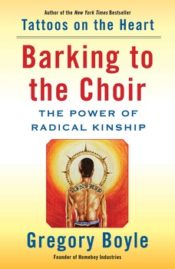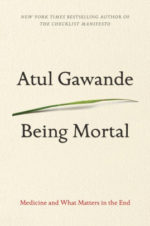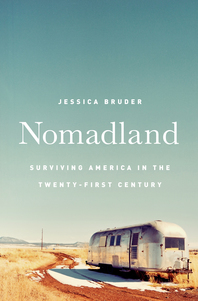United Mind Workers: Unions and Teaching in the Knowledge Society
Posted on | June 18, 2008 | Comments Off on United Mind Workers: Unions and Teaching in the Knowledge Society
Organizing the Other
Half of Teaching
Book ideas are born in odd places. After a gestation period that would frustrate an elephant, this one revealed its true form in an elevator. A National Education Association organizer approached Charles Kerchner, saying, “These changes you’re talking about-it’s not just reforming the union. We have to organize teachers all over again. The first time we organized their economic rights; now we have to organize them as educators. We have to organize the other half of their jobs.”
Yes-that was the point.
Transforming labor relations so as to get away from industrial-style collective bargaining was not simply a matter of attitude or bargaining style. And it certainly was not a matter of being cooperative versus confrontational. We had understood that deep organizational change was necessary. The Changing Idea of a Teachers’ Union (Kerchner and Mitchell, 1988), written nearly a decade ago, recognized different “generations” of labor relations, each separated by organizational struggles. But we had missed the scope of institutional change facing public education.
THE DIFFICULTY OF
INSTITUTIONAL CHANGE
Our failure to see the institutional change dimensions of labor relations caused us frustration with the pace and scale of labor-management reforms. No one involved-not even ourselves-recognized the enormous difficulty of changing fundamental employee-employer relationships within the existing institution. We witnessed gradual attempts at decentralizing decision making in schools, giving teachers and principals more say in the decisions that affected them, only to see those efforts dissipate. Process paralysis replaced the instinct to create distinctive schools. We saw bold ideas such as peer review start with a flurry of interest, and then not spread. Most unions, and most managements, were too mired in conventional wisdom to see the importance of teachers’ taking responsibility for their own work and the performance of their colleagues. Even large-scale and seemingly permanent reforms bogged down when economic times turned tough or a key leader departed. School boards seemed to have an unerring instinct for replacing reformist superintendents with enforcers of the conventional wisdom-as if school reform were an exercise in small-scale equilibrium.
We were also frustrated with labor’s critics. Organized labor is often ossified, and it deserves criticism. But the journalistic critics of teacher unions have missed by a mile. They have often been wrong on the facts, and almost always appear to write from ignorance about the history of working people in the United States and the social necessity that employees be able to represent their interests and aspirations for their work and their lives. In an age in which many American workers lead perilous economic lives, the social value of income security and decent wages receives a blind eye. Unions have surely talked too much and done too little about educational reform. Yet to criticize unions for opposing a particular reform assumes that reforms themselves don’t deserve vigorous debate.
Politicians and educational reformers likewise show a blind side. In a decade of educational reform, including hundreds of commissions and reports, unions were largely ignored except for a general backhanded criticism that they were a block on reform. For a while, we thought the problem was Republicans. The carping critics of the right were determined to impose vouchers or other alleged market-force solutions without a shred of evidence that school markets would prosper in inner cities, from which every other market-even the supermarket-had fled. But teacher-bashing and education-thumping became a bipartisan sport. No serious attempt to shape a reform teacher union policy has been undertaken by either political party.
Even our dearest friends, the teachers who carried most of the burden of change, proved baffling. Why did it seem impossible for teachers to focus hard on student learning? Why was it that our rule of thumb said it took three years for a school faculty to move from discussions about who got access to the Xerox machine to substantive conversations about how children learned, how it could be documented, and how learning could be increased? It often seemed that the psychological comfort of the participants was the main criterion for moving forward. There was no urgency to it, no clarion call.
MISSING SOMETHING BIG
We had missed something big. While teachers and school managers were grappling with the problems of interest-based bargaining and school site management, the tectonic plates of institutional change were rumbling underneath public education. Belief in the capacity of government declined and with it the belief that schools could solve their own problems. As the rocks of the old institution shook, noninstitutional magma bubbled to the surface, white hot and beautiful. One flow suggested that education’s problems would be solved by more equitable representation of vigorous interest groups. Another flow glowed with the allure of the market.
As we investigated a noteworthy set of educational reforms born in the 1980s, we thought we were witnessing a rebuilding of the grand coalition that had supported public education earlier in this century. The developments, reported in A Union of Professionals (Kerchner and Koppich, 1993) illustrated the possibility of reform, but also the difficulty of sustaining it. Originally, we thought that a union-management coalition based on rebuilding the schools would be sufficiently powerful to stabilize urban politics and give schools the time they needed to change within the existing institution. We were wrong.
Incremental change in public education proved difficult when the rest of society was unstable. When the big tectonic plates of the society and the economy move, everything else changes, too. The educational implications of what has been called the “third industrial revolution” of the 1970s and 1980s were not confined to rethinking vocational education or introducing computer literacy. The changes that depopulated Buffalo and Detroit and nearly made a ghost town of Flint-the ones that gave rise to Japan, Inc.-were sign and signal that the social and economic world was changing rapidly. Other institutions-including the most conservative, such as medicine and banking-heaved from their bedrock. Why would we think of schools and of teacher unionism with the slightest expectation that they would continue within the same institutional shell? The answer is that we are not used to thinking in terms of institutional change.
The last time education changed in a massive way coincided with the movement from an agricultural society to an industrial society, a change that gained speed rapidly in the late nineteenth century and fostered the social imbalances of the Gilded Age and the subsequent rise of the Progressive Movement. With the exception of collective bargaining and desegregation, almost all the contemporary structures of schooling, and of school governance, flow from this era. We work in organizations designed in 1916.
KNOWLEDGE AS SOCIETY’S
MASTER CONCEPT
Institutional change is as pervasive when it occurs as it is rare in the life of a society. When schools last underwent institutional change, they reorganized around new ideas of social life. Urbanism and industrialism became the master concepts of society, replacing the nineteenth-century ideals of agriculturalism and small-town life. It wasn’t that the schools were factories; anyone who ever worked in a real factory knows that. But industrial assumptions came to rule educational decisions. The idea that bigger was better drove the consolidation of school districts in rural areas and the unification of districts in cities. The number of school districts in the country fell from three hundred thousand to fewer than fifteen thousand today. The idea that specialized was efficient gave rise to high school departmentalization and to separate career paths for school administrators and teachers. The idea of scientific management gave school administrators the mantle of technical expertise, some freedom from school board domination, and a clearly established organizational superiority over teachers. This arrangement was most clearly visible in the pre-collective bargaining National Education Association, where for fifty years teachers were members, but superintendents ran the place.
As we examined the attempts at educational reform over the last decade, we gradually recognized that the master concept of society was changing from industrialism to something new, and that schools were in the midst of the change. The new master concept doesn’t yet have a name. Postindustrial tells us what’s past, not what’s coming. Urban economists such as Manuel Castells use the term informational society, signaling the importance of information and data flows. We prefer the term knowledge society because it suggests not only the flow of information, but its manipulation and use. Knowledge joins the traditional trio of labor, land, and capital as a source of wealth and power.
In Chapter Two, we examine the implications of changing from an industrial society to a knowledge society. We look at the uncanny parallels between the last half of the nineteenth century and the last half of the twentieth, and the implications for education as an institution.
Surprisingly, the largest implication is not for how schools are governed or run, but for how people teach and learn and what they should know. Industrial-era curriculum and pedagogy was different from that transmitted by McGuffey’s Reader. Why would we not expect knowledge-era learning and teaching to be different from Dick and Jane?
Teachers care about changes in teaching and learning. They know more about how children think and learn-and the conditions that promote thinking and learning-than do governors, business leaders, and most college professors. Why, we thought, is this voice of expertise not well articulated? And the answer kept coming back, “But teaching isn’t organized that way.” Collective bargaining legitimated teachers’ economic interests, but it never recognized them as experts about learning. The idea of knowledge workers who create, synthesize, and interpret information dominates the literature on modern workplaces, but teaching is still organized around the industrial-era assumption that teachers are essentially manual workers, pouring curriculum into passive minds. Thus in this book, we ask: If workers could organize around industrial life, why not organize around mental work? For us, the idea of united mind workers is more than a play on words.
IMAGINING A NEW INSTITUTION
OF PUBLIC EDUCATION
To write a book about an educational institution in which teacher unions organize around teachers’ knowledge of learning, we had to imagine an educational institution built around what some call a professional community. That is, to think about unions differently, we had to imagine schools organized differently. Even as the rumbling beneath us gathers strength, we had to imagine at least the elements of a new institution of education. To write about teacher unionism in the 1990s requires that we think of education in the United States as having entered a new age of institutional stability, even though we recognize that the immediate future is almost certain to be tumultuous.
Thus throughout writing this book, we struggled with the logical divide between designing a new institution of education and describing what we knew about unions and their organization. We took many long diversions into the speculative unknown: What would a school district look like? Would there be school boards? But these trails took us too far away from the heart of teacher unionism, and ultimately we decided to pick only a few structural elements of the new institution and build our idea of unionism around them.
All institutions have a means of defining quality and of enforcing it. They all have some idea about the size and shape of the organization that gets work done. And they all have some way of dividing up work and assigning it to different workers. These are the three elements that we use to describe how knowledge workers might be organized.
Ways of Defining and Creating Quality
The first structural elements of the emerging educational institution are the mechanisms for defining and measuring educational quality. We argue that quality is particularly important because the mechanisms for quality assurance are changing from those that assure quality by category, such as assignment of teachers with the right credentials, to those that assure quality by individual outcomes, such as student assessment and teacher performance review.
Knowledge-era quality is different from industrial-era quality. Thus we should not be surprised that a furious debate about standards, tradition, individual rights, and community values is being played out. A similar history was unfolded as a precursor to the reforms of the Progressive Era. We argue that defining and measuring quality-for students, for teachers, for schools-is central to what unions need to do. We cover this topic in Part Two, examining the union’s role in setting standards, educating new teachers, evaluating performance, and promoting teacher discipline.
Organizing Around Individual Schools
The second structural element in the emerging institution of labor relations is scale of union organization. We argue that unions should be organized around individual schools rather than school districts. This would be a drastic change, and a counterintuitive one. We take this position for two reasons: one strategic, the other pedagogical.
Our strategic reason for arguing that unions ought to organize around individual schools derives from the inherent instability of school districts themselves. The shape, scope, and function of school districts appears increasingly problematic. Every reform experiment-from school site management to charter schools-threatens the social order of the existing school system. And every experiment that structurally alters a district threatens one of the elements by which unions now gain influence and stability. While it is true that not all these reforms are good ones, it makes no strategic sense for unions to make their organization dependent on propping up what are often dysfunctional school districts. To do so positions teacher unions to be left behind, trapped on the wrong side of the gulf opened by historic change.
Education stands at the beginning of a reform cycle, not at the end, and there is every reason to expect it to undergo the kinds of large structural changes that have rippled through health care and financial services in the last decade. A better strategy is to organize around the smallest feasible unit of organized learning, the school. Schools may look different than they do now, but we think that they will be stable organizational entities for the foreseeable future.
Our pedagogical reason for arguing that unions should be organized around schools derives from the need for diversity and efficiency during unsettled times. It won’t solve the educational design problem to recreate massive systems, searching for what David Tyack calls the one best system. Change will require much experimentation and a lot of adaptation. This is also a time of great social diversity and substantial contention. The racialization of politics and the proliferation of voices paralyzes many urban school decision processes. One way for social diversity to work is to attach it to educational decisions at schools.
In Part Three, we describe a labor relations system built around relatively autonomous schools. These could be charter schools, schools within a district having substantive site management and governance provisions, or schools in a governance arrangement not yet practiced. We describe what a contract would look like at a school-site level and how it could be negotiated and administered without an undue burden on either teachers or administrators.
An Expansive Labor Market for Teacher Talent
The third structural element is the labor market. Industrial organizations were built around the idea of careers within organizations, what economists call internal labor markets. Organizing in this way distinguished industrial employment from the prior system of craft-based work, where workers frequently moved among employers and where they identified more heavily with their occupation than with their employer. Although we see the imprint of industrial-era labor markets most clearly in the promotion pattern for school administrators in large school districts, teaching was also organized as an internal market. Under both civil service and collective bargaining, job protection rights attached to the individual school district, and there were often substantial disincentives for moving among school districts, and sometimes from moving among subdivisions of a school district. When teachers gained collective bargaining, they organized around protections for the jobs they had-the only ones they were likely to get unless they became administrators. Job protection became a natural and understandable goal of teacher unions. Although far from absolute, due process and seniority protections were very important elements of personal security for teachers.
However, job protection unionism has serious drawbacks. It protects teachers, but it also constrains them. To sort out what workers are entitled to what protections, jobs and the protections associated with them must be tightly specified. Almost any substantive change in teaching work requires altering the web of protections. New combinations of work and energy become difficult.
Moreover, job protection unionism is predicated on the continuing of an internal versus an external labor market for teachers, and that, in turn, is predicated on public schools maintaining a virtual monopoly on schooling and direct instruction. Almost any change in the structure of schooling becomes a threat to these protections. Home schooling, contracting out, charter schools, vouchers, private schools-all threaten existing teachers because teachers’ economic security is almost exclusively tied to continued employment in the same school district. Even radical demographic shifts-through changes in birth rates, suburbanization, or deindustrialization-threaten teachers’ economic security. A number of pressures limit the effects of job protection unionism built around internal labor markets.
In Chapters Eight and Nine, we describe how a labor market for teachers might work if it were designed around an external labor market. If individual schools, rather than school districts, were the central organizing feature of teacher unions and of schooling, then teachers would need a way to enter and leave employment and to move from school to school.
Our primary mechanism is a modern and professionalized version of the historic craft union hiring hall. Unions, we argue, should take on many of the job finding and job placement functions that were undertaken by school districts in the era of bureaucratic organization.
Three core ideas become the structures of our notions about school organization and thus about union organization:
- Organize around quality: Advocate, implement, and enforce standards for student learning and standards for teaching. Back these up with adequate professional development and strong peer review systems.
- Organize around schools: Slim the district contract and create individual school compacts covering resource allocation, hiring, quality assurance, and how teachers take joint responsibility for reforms.
- Organize around an external labor market: Create modern hiring halls that allow teachers to switch jobs more easily. Make pensions and benefits portable, and shape a career ladder that allows people to enter education as classroom aides and advance through education and experience to teaching.
ORGANIZING AN AMERICAN
INSTITUTION
In the last two chapters, we return to the question of institutional change. Education will surely get better by organizing from the classroom up, but organizing an institution requires thinking about how a system of schools can be put together that looks and acts differently from an industrial hierarchy. This is a daunting task because it cuts against everything we know or have experienced in our lifetimes. Our instincts about such vital organizational functions as control may well be wrong. We make no pretense at all of tackling vital institution-building questions such as the conduct of school governance in this book; rather, we concentrate on the two elements we feel are necessary to institutionalizing teacher unions for the knowledge society.
The first institutional element is a new labor statute, one that recognizes requirements of knowledge work and then builds legal structures to support it. Chapter Ten argues that statutes become powerful patterning and institution-building devices and that the current labor relations framework does not create the necessary balance between worker protections and inducements for a productive workforce in the knowledge society. It then suggests the changes that need to be made in the National Labor Relations Act structure, which is the basis for most state teacher statutes.
Chapter Eleven returns to the theme of organizing. Teacher unions face two organizing tasks. One is to organize a new institution of education. The other is to serve as a prototype or vanguard for knowledge workers in general. The questions that teachers face in their work find strong parallels among highly educated, skilled workers in health care, finance, communications, and other industries undergoing massive restructuring. Organized labor has traditionally not been attractive to these workers, precisely because it was focused around industrial work patterns rather than professional ones. We believe organized teachers can demonstrate how it is possible to pursue quality and productivity simultaneously with dignity and “simple justice.”
These are not short-run tasks, yet time is of the essence. In the postindustrial age, the future often arrives ahead of schedule.




